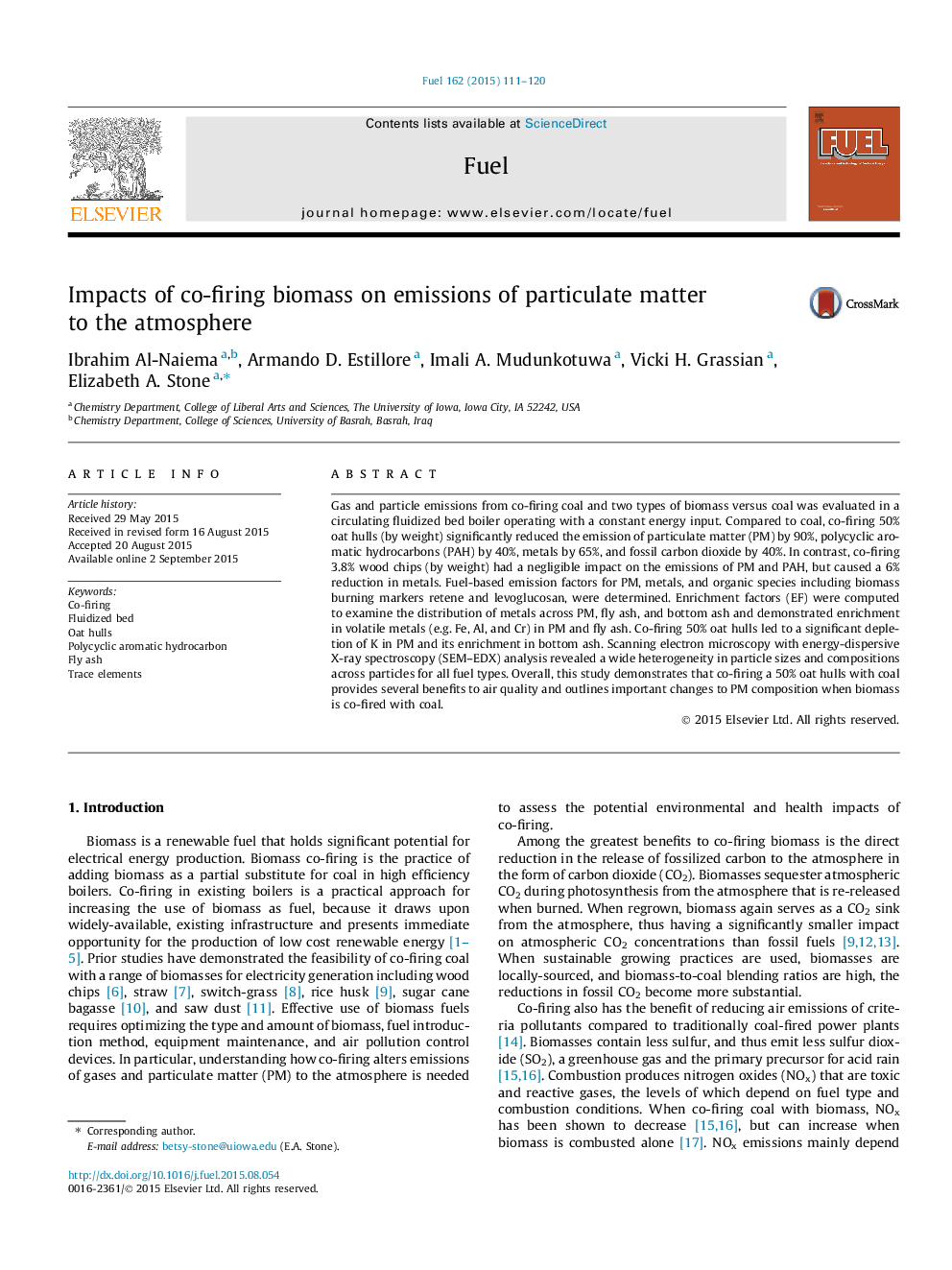| Article ID | Journal | Published Year | Pages | File Type |
|---|---|---|---|---|
| 6634439 | Fuel | 2015 | 10 Pages |
Abstract
Gas and particle emissions from co-firing coal and two types of biomass versus coal was evaluated in a circulating fluidized bed boiler operating with a constant energy input. Compared to coal, co-firing 50% oat hulls (by weight) significantly reduced the emission of particulate matter (PM) by 90%, polycyclic aromatic hydrocarbons (PAH) by 40%, metals by 65%, and fossil carbon dioxide by 40%. In contrast, co-firing 3.8% wood chips (by weight) had a negligible impact on the emissions of PM and PAH, but caused a 6% reduction in metals. Fuel-based emission factors for PM, metals, and organic species including biomass burning markers retene and levoglucosan, were determined. Enrichment factors (EF) were computed to examine the distribution of metals across PM, fly ash, and bottom ash and demonstrated enrichment in volatile metals (e.g. Fe, Al, and Cr) in PM and fly ash. Co-firing 50% oat hulls led to a significant depletion of K in PM and its enrichment in bottom ash. Scanning electron microscopy with energy-dispersive X-ray spectroscopy (SEM-EDX) analysis revealed a wide heterogeneity in particle sizes and compositions across particles for all fuel types. Overall, this study demonstrates that co-firing a 50% oat hulls with coal provides several benefits to air quality and outlines important changes to PM composition when biomass is co-fired with coal.
Related Topics
Physical Sciences and Engineering
Chemical Engineering
Chemical Engineering (General)
Authors
Ibrahim Al-Naiema, Armando D. Estillore, Imali A. Mudunkotuwa, Vicki H. Grassian, Elizabeth A. Stone,
